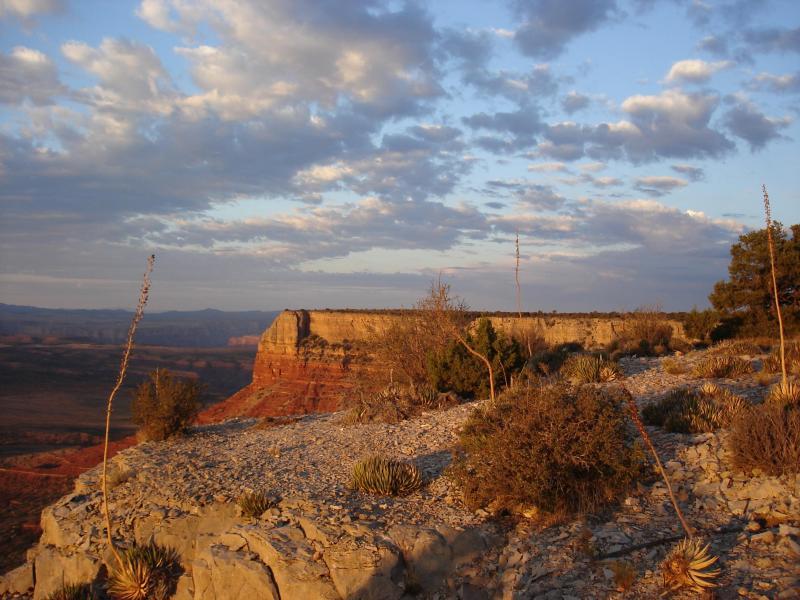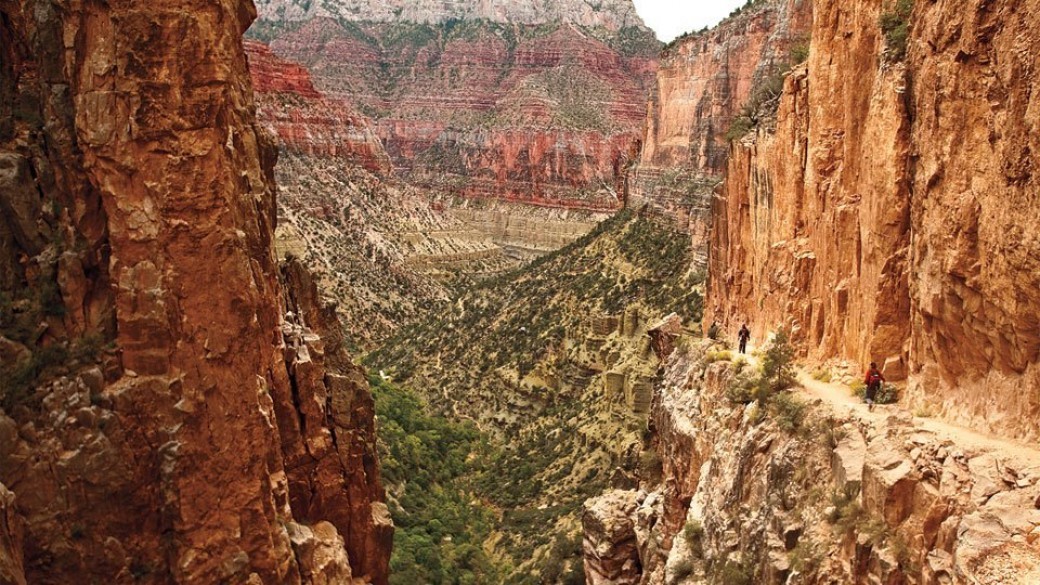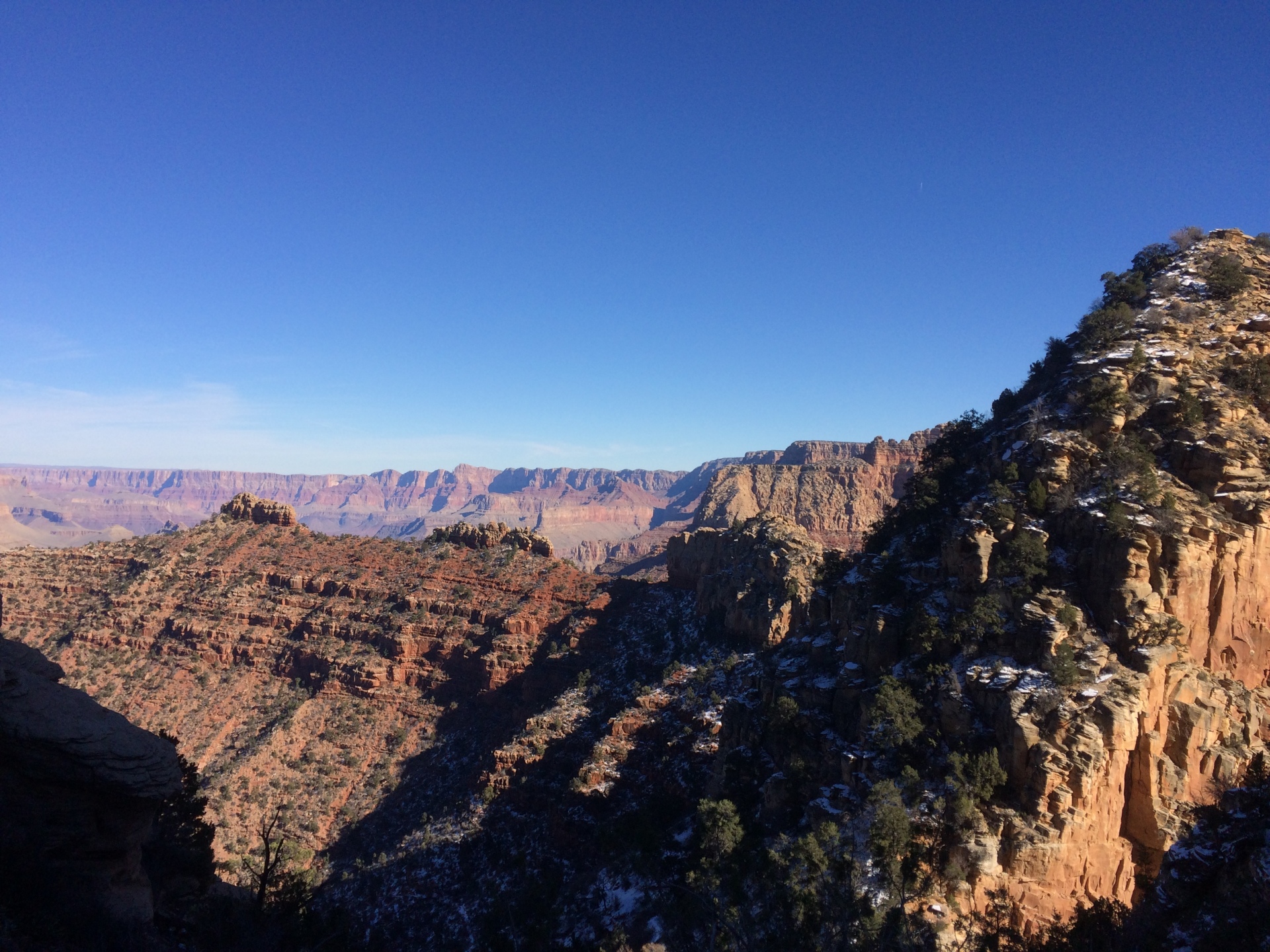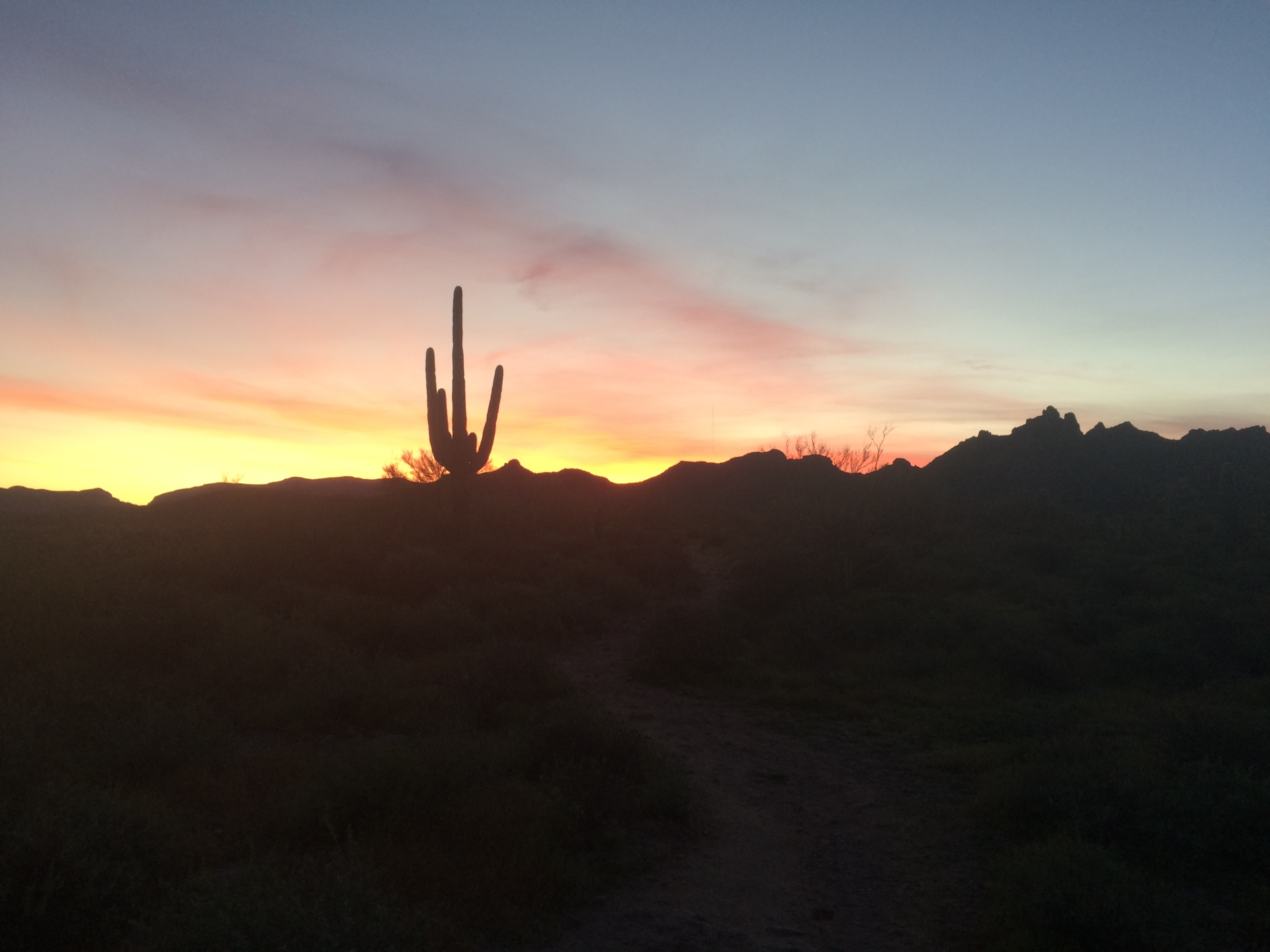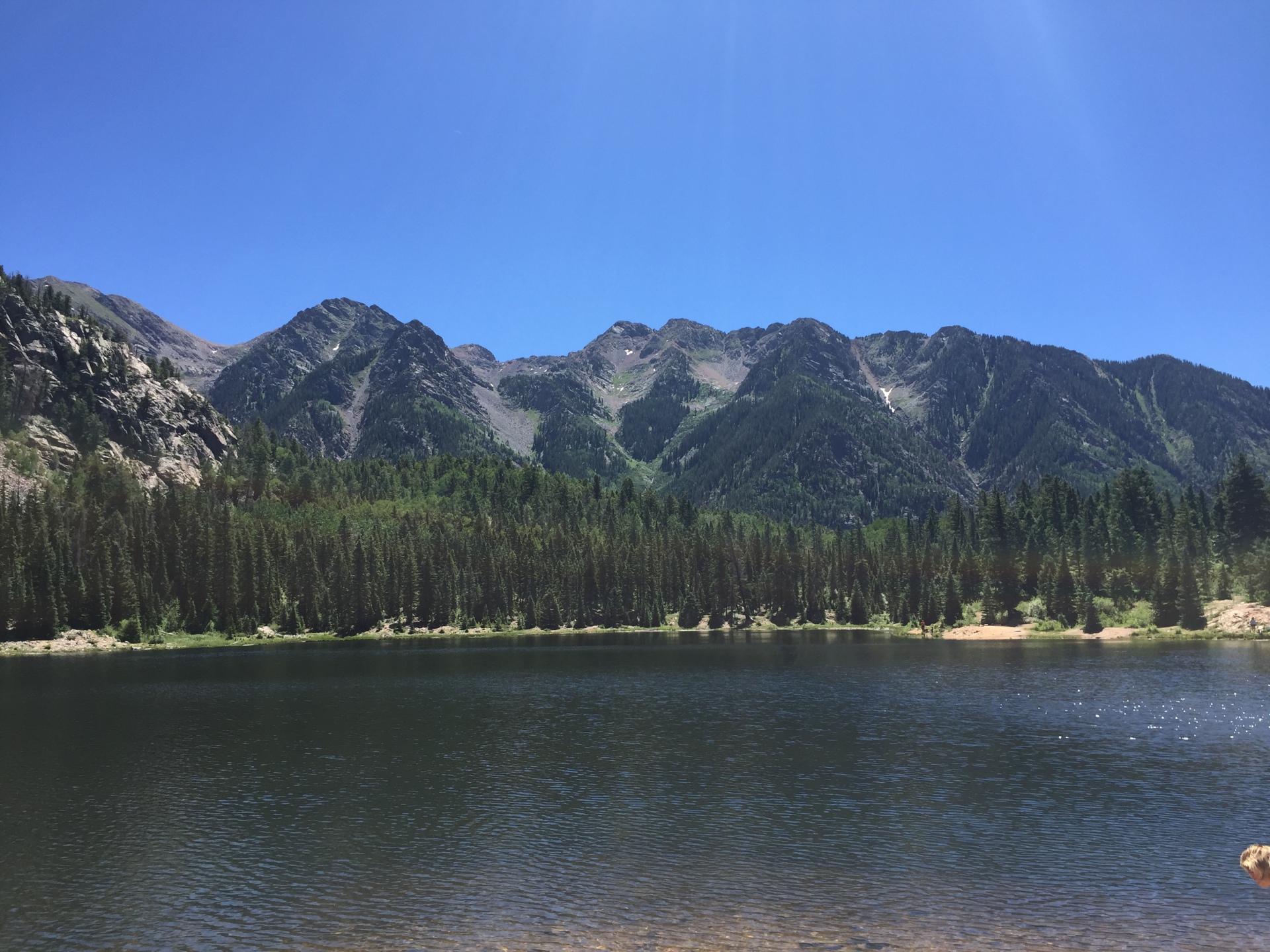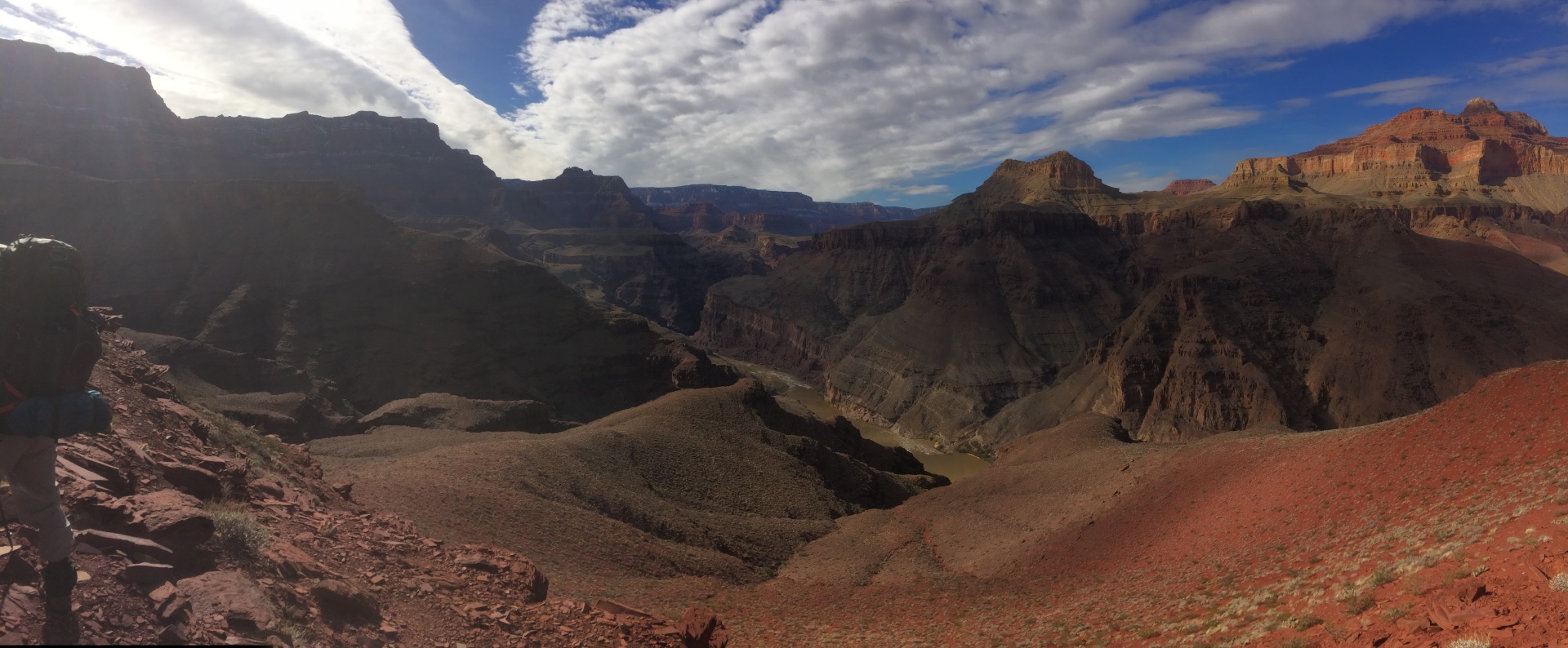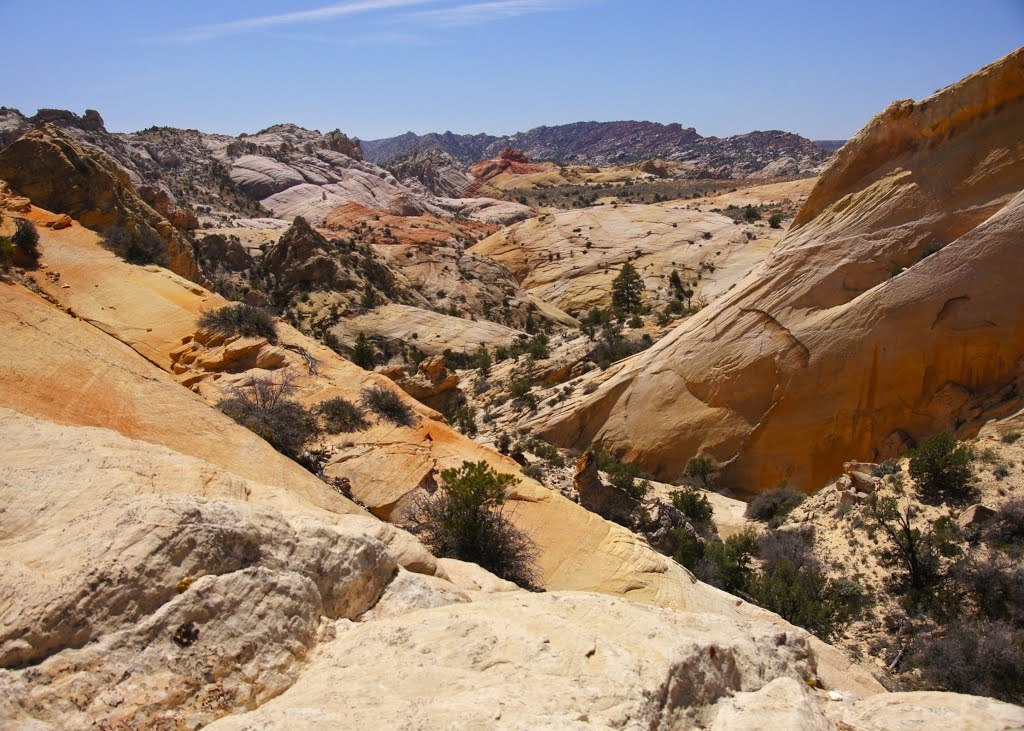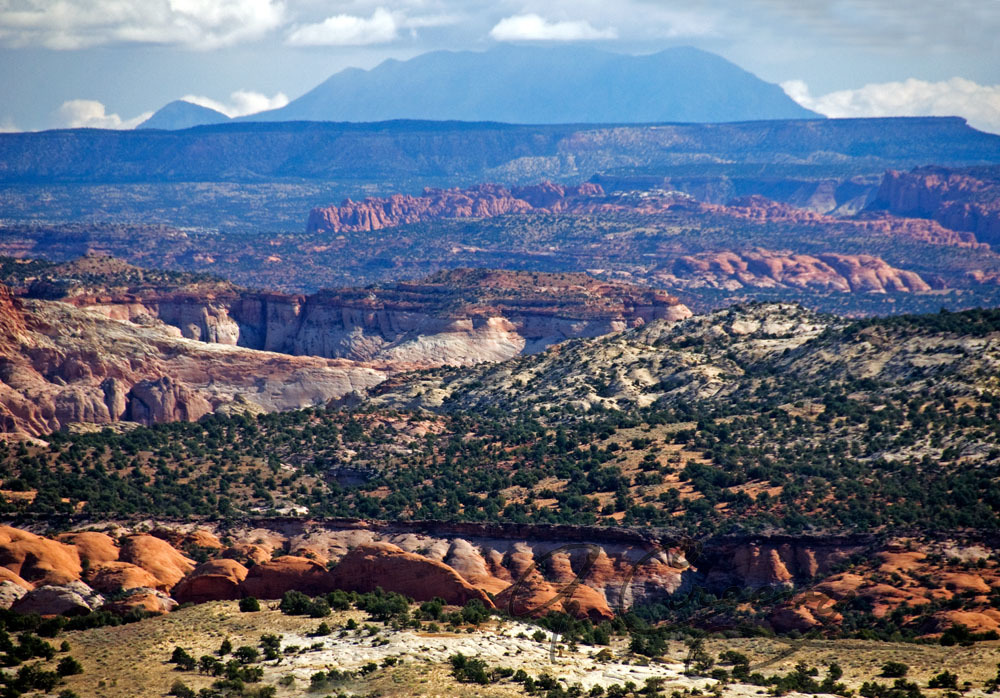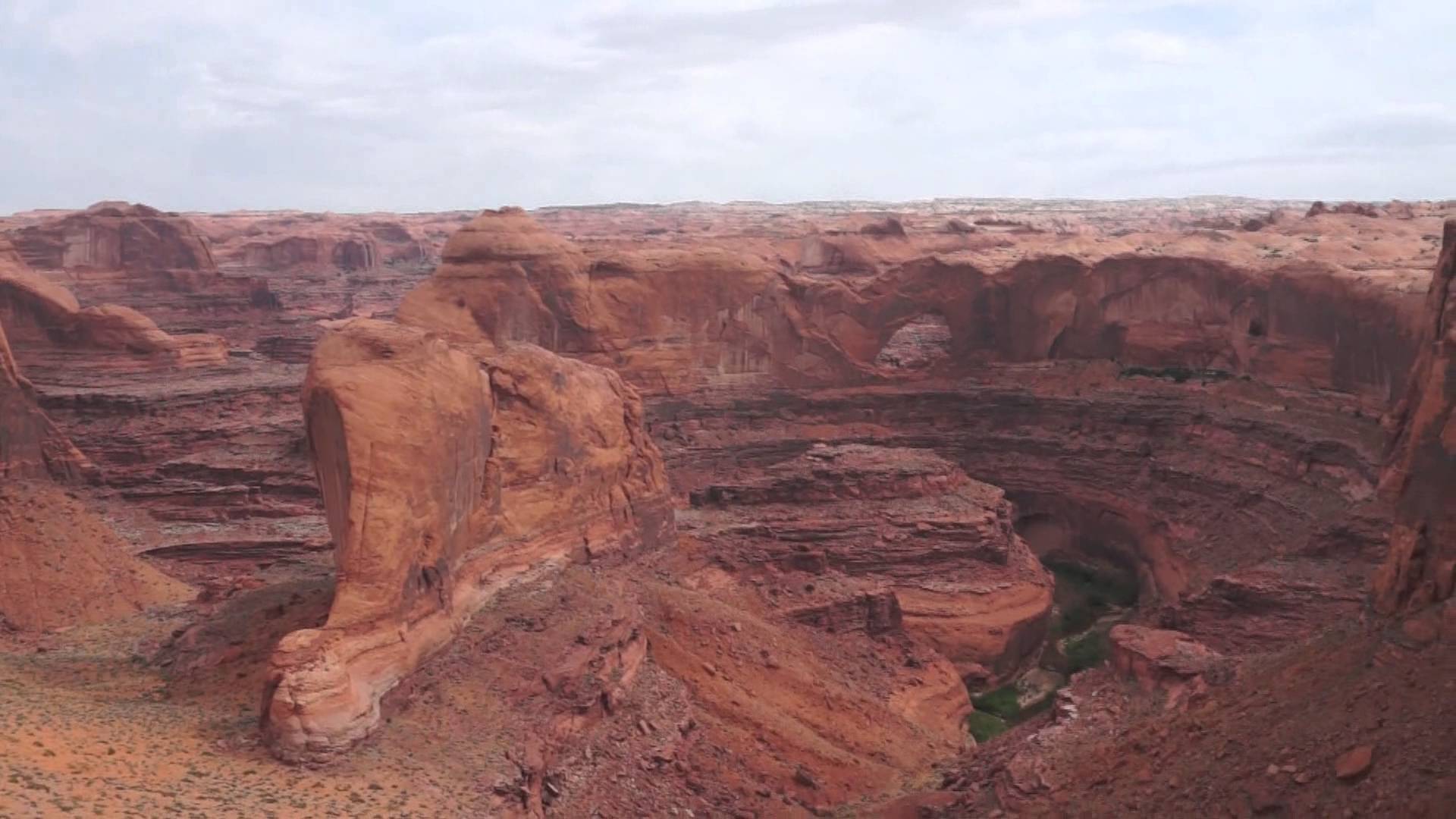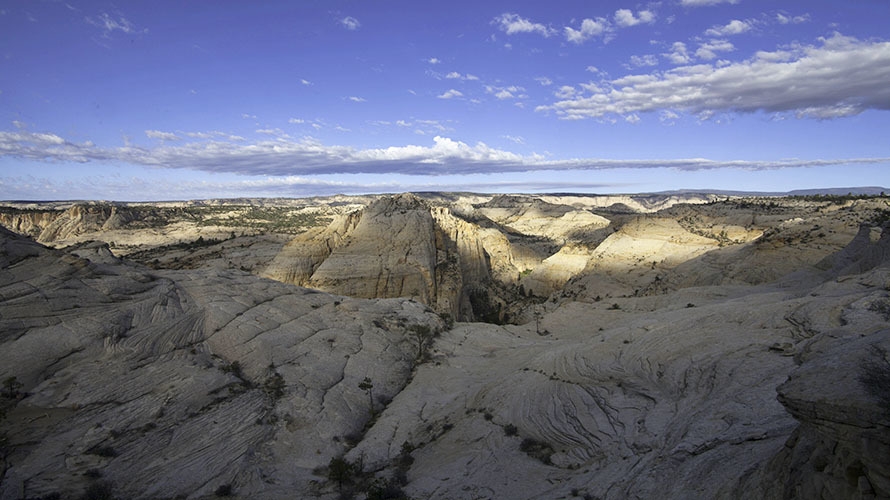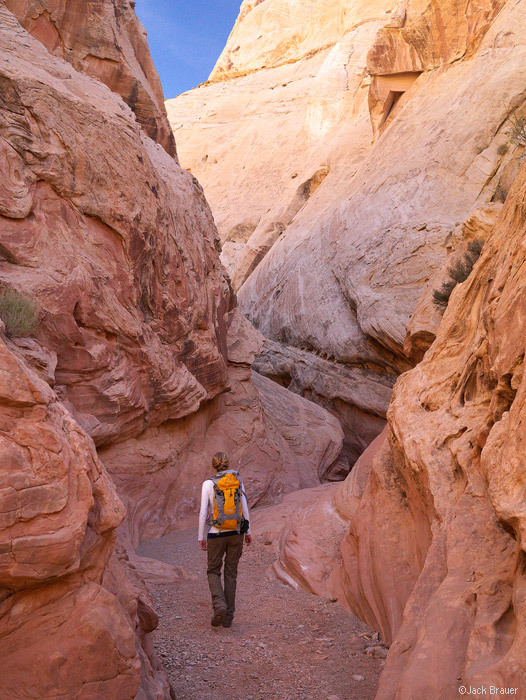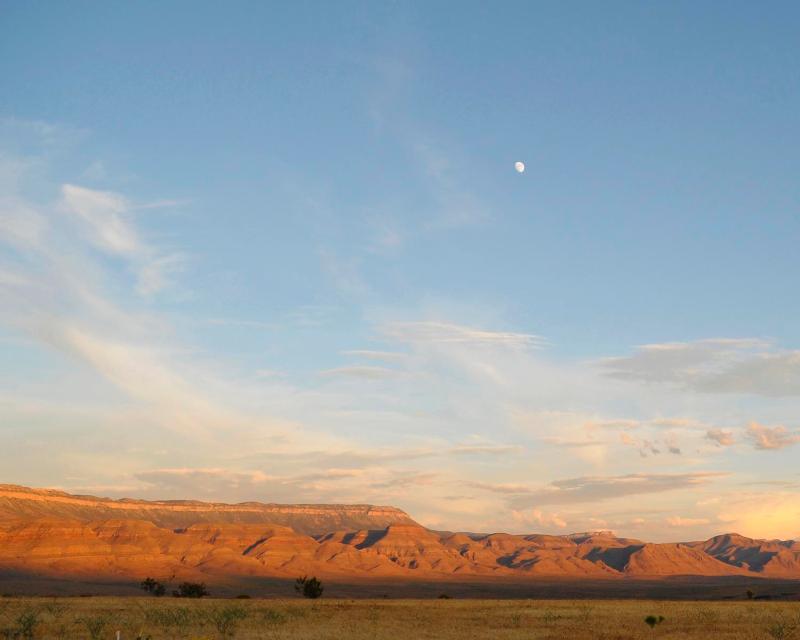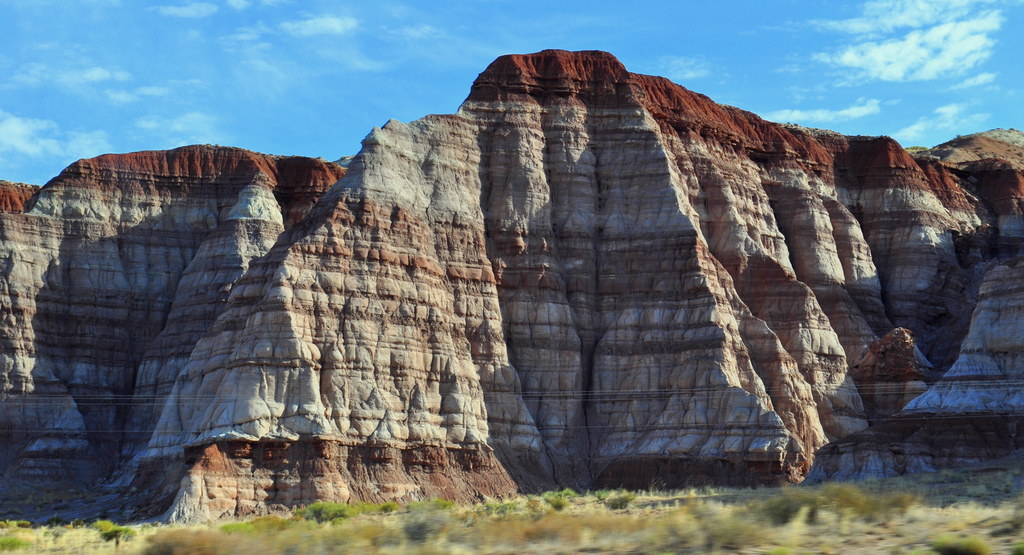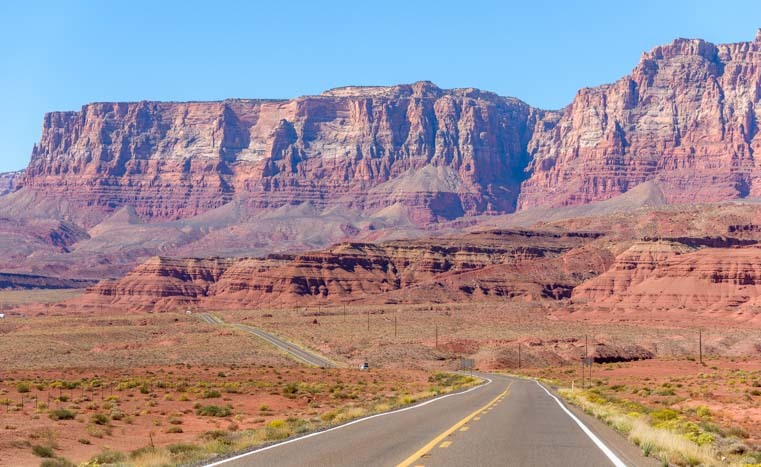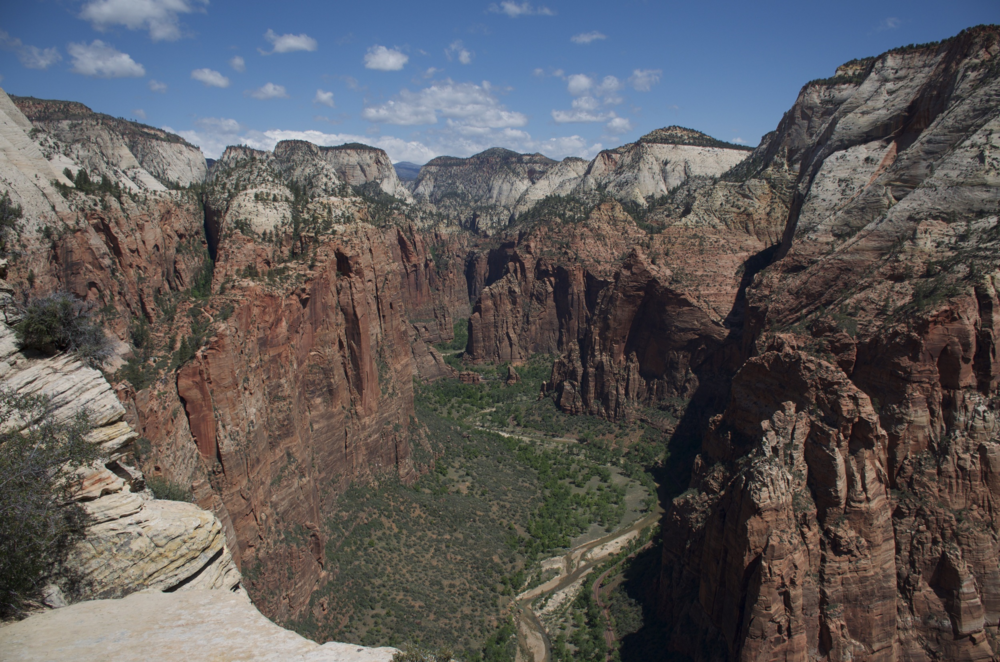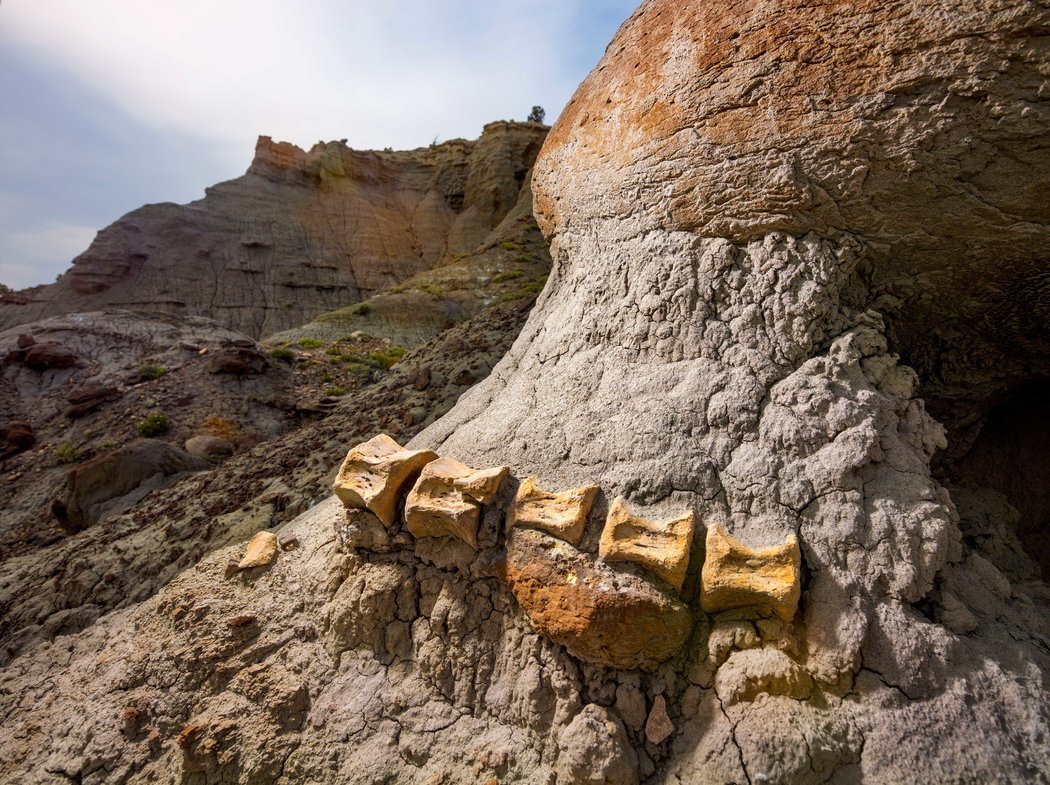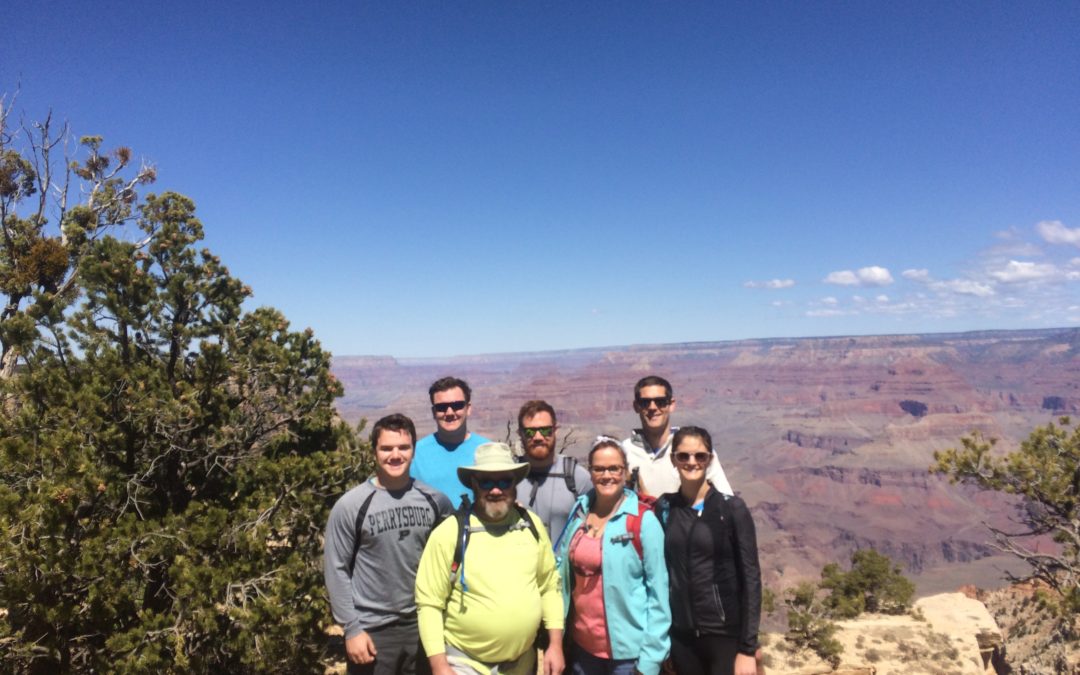
by The Goat | Aug 27, 2019 | Grand Canyon, Hiking
Hiking in the Grand Canyon is truly a humbling, inspiring, jaw-dropping, fantastical, enlightening, and (insert hyperbole) experience. Even a simple stroll along the rim of this national treasure is sure to conjure existential feelings that may stir your very being. However, you may also find yourself confronted with so many choices that it could seem overwhelming. Although it’s impossible to make a wrong choice in Grand Canyon in terms of hiking choices, it is helpful to have someone that can narrow it down for you. Here is The Goat’s Top 5 Day Hikes in Grand Canyon National Park.
5. Bright Angel Trail to Indian Gardens
The most popular trip in the park, and one of the most famous day hikes in the world is the Bright Angel Trail to Indian Gardens. Tracing the Bright Angel Fault, the central canyon’s most important structural feature, the trail is excellent for first-time canyoneers. Indian Gardens, named for the fact that it sustained Ancestral Puebloan peoples for thousands of years with its natural perennial spring and shaded riparian area, fabulous on hot days in the summertime.
Length: 6 miles round-trip
Difficulty: Moderate
Season: Year-Round, though midday in summer requires an early start
4. Wildforss Trail to Wildforss Point
This grand North Rim hike is perhaps the finest hike in the Grand Canyon that does not take its travelers below the rim. Named after Gunnar Wildforss, an artist who became enamored with painting the Grand in the 1920’s and 30’s using pastels and watercolors, the Wildfires Trail gives treats it hikers to fabulous views of the splendor of the North Rim from the Kaibab Plateau. Clear days on this trail yields views all the way to the San Francisco Peaks near Flagstaff, nearly 80 miles away as the crow flies.
Length: 9.8 miles
Difficulty: Moderate
Season: May-October
3. Grandview Trail to Horseshoe Mesa
Though challenging, not to mention a bit toasty in the summer heat, this is simply one of the most outstanding hikes not only in Grand Canyon, but in the entire National Parks system. From Grandview Point, which lives up to its name, hikers are treated to views of two monoclines (folds in the Earth’s crust) and sweeping Grand Canyon Vistas. A short side trip down the Redwall leads to the most successful mining claim in all of Grand Canyon, where some mining equipment and tunnels are left intact. Lunch on Horseshoe Mesa is simply sublime.
Length: 6.5 miles
Difficulty: Strenuous
Season: Year-round, though summer requires an early start
2. Hermit Trail to Dripping Springs
The best thing about this hike? A fabulous lunch spot under a cave canopy of delightfully misty spring water. Beat the crowds that flock to Bright Angel and South Kaibab trails by taking the shuttle out to Hermit’s Rest and hiking down the Hermit Trail. Dripping Springs also represents a fabulous opportunity to see the geologic forces that are responsible to carving Grand Canyon up close and personal.
Length: 6.25 miles
Difficulty: Moderate
Season: Year-round, though summer requires an early start
1. North Kaibab Trail to Roaring Springs
We’re a bit partial to the North Rim here at Blue Marble Adventure GeoTourism, but that doesn’t make The Goat’s opinion on this one biased in the least. North Kaibab to Roaring Springs is just the best day hike in the Grand Canyon, period. Avoid the crowds of the South Rim and South Kaibab while enjoying spectacular and contemplative North Rim scenery. Sound good? It gets better. The North Rim’s only maintained trail is also the most approachable for first-time Grand Canyoneers, making it a particularly recommendation-worthy hike indeed.
Length: 10 miles
Difficulty: Strenuous
Season: Year-round, though summer requires an early start
The best way to experience everything that these hikes have to offer is with one of our expert geologist/guides, who will introduce you to the intricacies and secrets of the rocks in Grand Canyon, as well as history, culture, and everything that makes Grand Canyon so grand. Call us today!
Going Guided
Hiking and exploring Grand Canyon, or any of the National Parks, is a special experience. Although it is possible to see these places yourself, hiring a guide is a great idea. For instance, guiding services provide logistical support, and plan everything for your best possible trip. They provide a great safety net on the trail, and are trained in backcountry medicine. Above all, they provide a depth of knowledge of the region that turns a walk into a true adventure.
Blue Marble Adventure GeoTourism provides all of the support you need, and pairs that with expert geologist/guides. Our backcountry meals use fresh ingredients, and are planned by a professional chef. Furthermore, we provide top-of-the-line gear and passion for the places we explore. In conclusion, you can visit National Parks, but going with a guide can create and even more memorable experience. Don’t be shy, and call us!
Read our blog!
For adventure hiking vacations in a geologic time machine, see our epic tours in Grand Canyon, Utah, and Arizona!
For geological musings read The Goat’s geology blog.
Follow us on Facebookand Instagram
Explore Further, Be Wild, See Through Time — Blue Marble Adventure GeoTourism
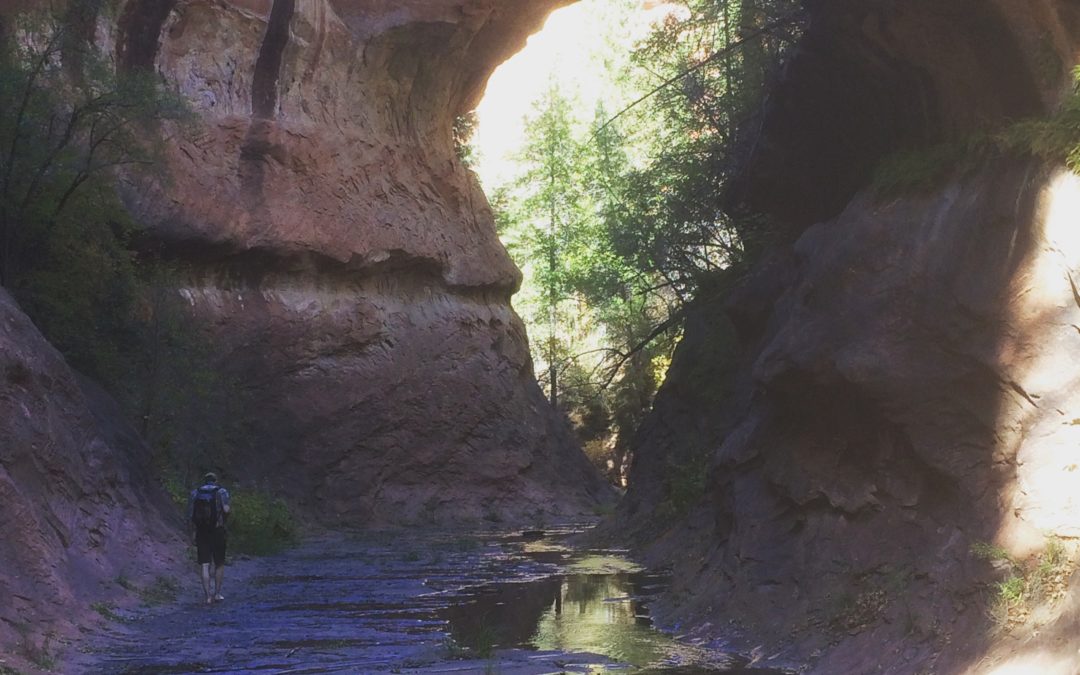
by The Goat | Aug 27, 2019 | Hiking
How to Stay Cool in Grand Canyon
“We knew it would be hot, but we didn’t think it would be this hot.”
–Blue Marble Adventure GeoTourism guest near Phantom Ranch in Grand Canyon
Though this particular guests’ quote is their own, variations of this are heard regularly on the trail, not only on our tours, but in general. The heat of the southwest can be downright oppressive, almost stifling during midday heat in the summertime. Many of Blue Marble’s hiking tours in Grand Canyon, Utah Canyon Country, Death Valley, or Havasu Falls are in the arid southwest, where 90 degrees in early April is routine, and triple digits are seen quite often during the popular summer months. If your timing is a bit off, if you are a desert hiking novice, or you simply underestimated the heat of the midday, this article is for you.
Many folks choose to hire a backpacking or hiking guide for just this reason; they can quite simply be the difference between the ultimate adventure of a lifetime, and a perilous rescue situation. As you explore our wonderful desert paradise here in the American Southwest (with us or without us!), our Goat wants to be sure that you are doing it safely, and that your unforgettable adventure is unforgettable for all the right reasons!
With the busy hiking season approaching, The Goat thought it best to dole out his best tips and tricks for staying cool, even when it seems impossible. Here are our Top 3 ways to beat the heat on the trail:
1. Early Boots Get the Worm
We are often on the trail as early as 4am during the warm months, and no later than 6am. Does this seem like some ungodly hour? It does to us too, but you will see the benefits later in the day. An early start allows you to not only beat the heat, but you will also typically have the trail to yourself, have a better chance to see wildlife while you’re hiking, and be relaxing in camp instead of hiking during the heat of midday. Trust us; it may seem ridiculous when it’s that early, but there’s no doubt you will swear by it soon enough.
2. Don’t Flip, Take a Dip
When you see water, get in. Most water that you find along the way in the southwest is there because it’s in shade, it’s seeping from the ground, or it’s about to be gone. Being wet in the southwest is a very good thing, as our legendary dry air quickly evaporates moisture, creating a great cooling effect. Ever wonder why everyone in Arizona has a pool? Maybe they’re onto something.
3. Just Eat It!
Many people grossly underestimate how much food they need when its warm; problem is, you don’t really feel hungry when it hot outside. However, you need to keep eating, as it both fuels your body’s natural cooling abilities, and can help you regulate your fluid intake. Interestingly hyponatremia, or a glut of water, is a leading cause of wilderness debilitation and happens nearly as often as dehydration. Be sure to eat plenty of food, and regulate your water intake at a healthy pace.
All of our guides are medically certified as Wilderness First Responders, and have years of backcountry experience that can be invaluable to you as a backcountry traveler in recognizing symptoms of hyponatremia, dehydration, heat exhaustion, and even heat stroke, which can be a serious issue. What’s great here is, all you need to do is engage in what is likely already a favorite activity; snacking!
With these three things in mind, you will get a great jump on a fabulous time in the wilderness, and not need to worry about running into a potentially shady (or un-shady as it might be) type of situation. See you on the trail!
Going Guided
Hiking and exploring Grand Canyon, or any of the National Parks, is a special experience. Although it is possible to see these places yourself, hiring a guide is a great idea. For instance, guiding services provide logistical support, and plan everything for your best possible trip. They provide a great safety net on the trail, and are trained in backcountry medicine. Above all, they provide a depth of knowledge of the region that turns a walk into a true adventure.
Blue Marble Adventure GeoTourism provides all of the support you need, and pairs that with expert geologist/guides. Our backcountry meals use fresh ingredients, and are planned by a professional chef. Furthermore, we provide top-of-the-line gear and passion for the places we explore. In conclusion, you can visit National Parks, but going with a guide can create and even more memorable experience. Don’t be shy, and call us!
Read our blog!
For adventure hiking vacations in a geologic time machine, see our epic tours in Grand Canyon, Utah, and Arizona!
For geological musings read The Goat’s geology blog.
Follow us on Facebookand Instagram
Explore Further, Be Wild, See Through Time — Blue Marble Adventure GeoTourism
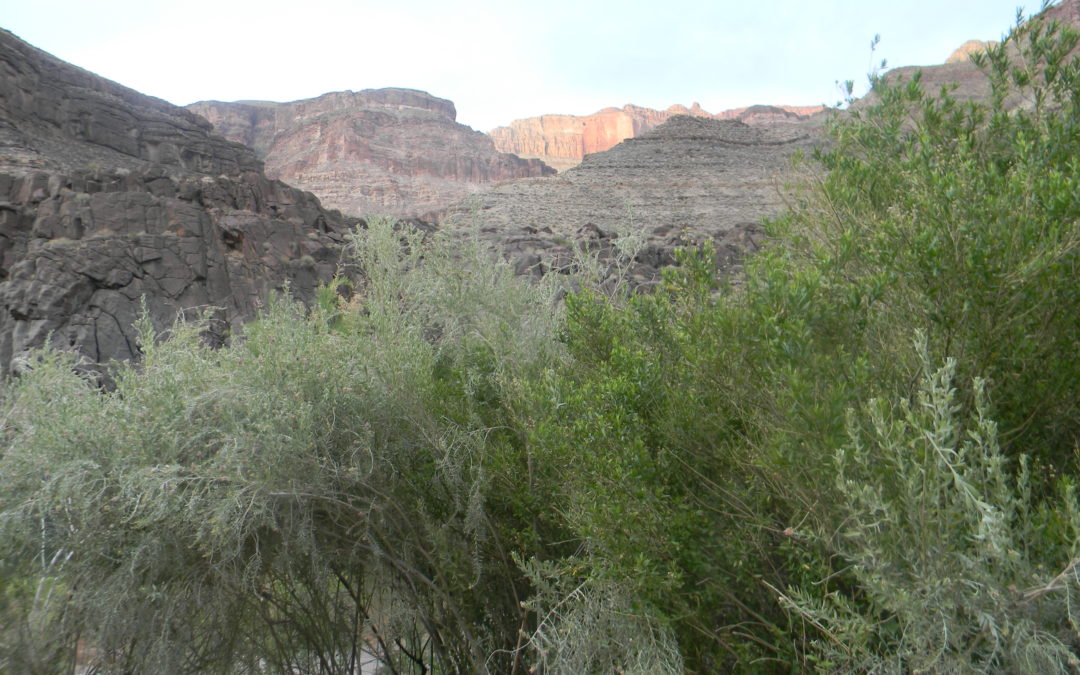
by The Goat | Aug 27, 2019 | Grand Canyon
How to Avoid the Crowds in Grand Canyon
You’re finally doing it; you’re going to see the Grand Canyon. Your trip-of-a-lifetime, bucket-list-checking-off, brag-to-the-friends-and-family vacation is finally here. You’ve been waiting years, planning carefully, and have everything envisioned just the way you want it. You get through the gate, you head to the South Rim, and boom; there it is: throngs of people, multitudes of hordes, hives of enormity. There’s so many camera-toting, elbow-throwing, kid-screaming fools out here you can’t even get to the actual rim to even see the thing. Do you give up? Hell no, says The Goat.
How many people visit Grand Canyon?
You have just experienced the Grand Crowdyon, the second-most visited National Park in America tipping the scales at over 6 million guests in 2016. The statistics here are fun to throw around, because they tell you, the savvy Grand Canyoneering, just when to go, where to go, and how to go. The simple truth is this: the vast majority of people who visit the Grand Canyon fit into a very particular category. They don’t hike, they don’t go much of anywhere, and they don’t stay for long.
For example, of the 6 million people who visited Grand Canyon in 2016, 90% stayed above the rim, 65% stayed within a 5-mile radius of the South Rim Visitor Center, and the average visit time to this most awe-inspiring natural wonder is less than three paltry hours. All this is not even to mention that over 60% of the park’s visitors punch their tickets in June, July, and August, meaning that nearly 4 million people cram into Grand Canyon’s most popular attractions in just 90 days (out of 365 if you’re counting).
What does all of this mean? Well, to seasoned Grand Canyon travelers it means that the crowds are actually pretty easy to skirt if you know how. Follow our easy guide, and you’ll have Grand Canyon and all it glory (relatively) to yourself.
1. If you must go in the summer peak season…….
Follow these rules: get out early, get out during the week, and stay away from South Rim madness. If you’re just dying to hike Bright Angel, South Kaibab, or even the Hermit, Tanner, or Grandview Trails during summer, you had best be ready to hit the trail before 5am. This will not only help you avoid the throngs, but it will help you avoid the oppressive midday heat of a Grand Canyon summer. The “get out early” rule applies to every Grand Canyon trail in the summer, even if you’re not concerned about crowds.
Secondly, it’s best to enjoy Grand Canyon during the week. I don’t feel like I need to explain this in detail. Thirdly, staying away from South Rim madness can entail a few things. Go to the North Rim, or head west to Bass Canyon and the like. The South Rim Visitor Center is just the low-hanging fruit, the rest of the tree has so, so much to offer.
2. Go for a Hike
As we said earlier, less than 10% of people go below the rim. Though it won’t necessarily be an isolated wilderness experience, particularly on the always-crowded corridor trails, you will not have to fight tooth and nail for the photos, the space, and the quiet. For those crazy enough to attempt, there’s always the Rim-to-Rim or Rim-to-River and Back option!
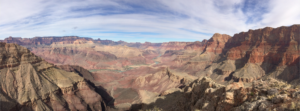
3. Go to the North Rim
It’s a bit harder (a longer drive) to get to, so it sees far fewer visitors than its southern counterpart. The amenities at North Rim are only open from May 15-October 15, so plan accordingly. If you do so, you will be treated to outrageous scenery that is a decidedly different perspective than the famous South Rim views
4. Go during the off-season
A previous blog highlighted Grand Canyon as a spectacular winter destination, and we’ll hold true to our claims. Winter brings excellent hiking temperatures, sparse crowds, and discounts at park lodging.
5. Don’t be afraid to ask
Grand Canyon Park Rangers are some of the most knowledgeable, most courteous people in the National Park system.. They will help you plan your trip so that you can avoid the hive even during the busiest times of the year.
It really boils down to common sense. Want to avoid the crowds in Grand Canyon or other popular National Parks such as Yosemite, Yellowstone, and the Great Smoky Mountains? Use your head and don’t go when and where everyone else goes. One of the best ways to avoid the crowds is going with a guide. These guys/gals are professionals who know their parks like the back of their hands, and are sure to know the hidden spots, best-kept secrets, and locals-only spots in some of the world’s most crowded outdoor playgrounds.
Going Guided
Hiking and exploring Grand Canyon, or any of the National Parks, is a special experience. Although it is possible to see these places yourself, hiring a guide is a great idea. For instance, guiding services provide logistical support, and plan everything for your best possible trip. They provide a great safety net on the trail, and are trained in backcountry medicine. Above all, they provide a depth of knowledge of the region that turns a walk into a true adventure.
Blue Marble Adventure GeoTourism provides all of the support you need, and pairs that with expert geologist/guides. Our backcountry meals use fresh ingredients, and are planned by a professional chef. Furthermore, we provide top-of-the-line gear and passion for the places we explore. In conclusion, you can visit National Parks, but going with a guide can create and even more memorable experience. Don’t be shy, and call us!
Read our blog!
For adventure hiking vacations in a geologic time machine, see our epic tours in Grand Canyon, Utah, and Arizona!
For geological musings read The Goat’s geology blog.
Follow us on Facebookand Instagram
Explore Further, Be Wild, See Through Time — Blue Marble Adventure GeoTourism
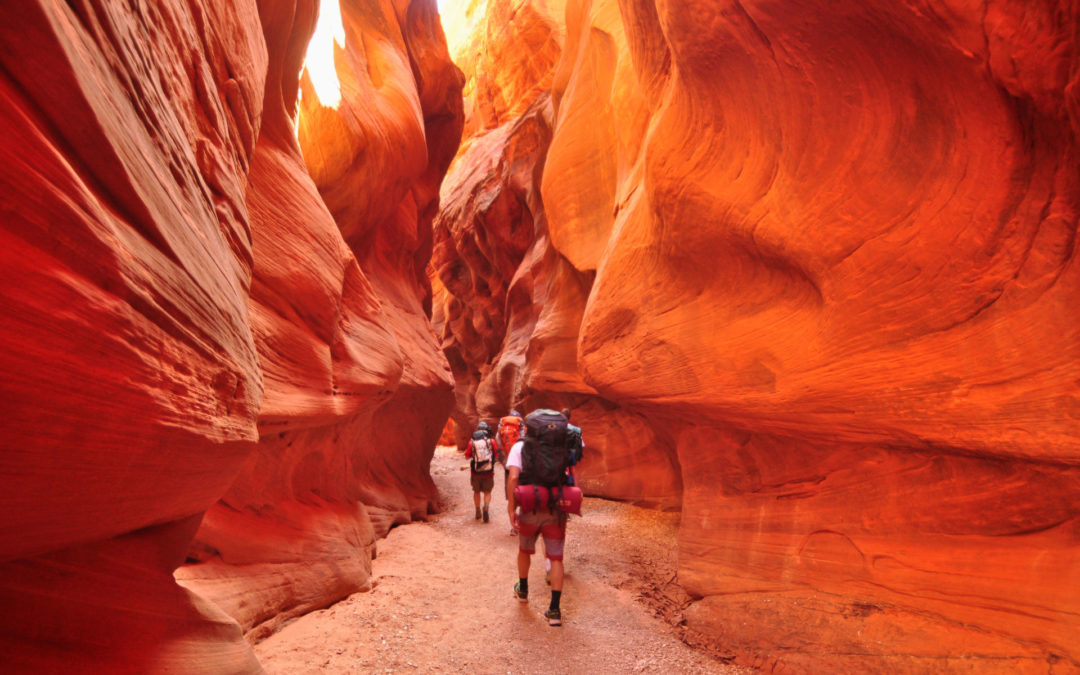
by The Goat | Aug 27, 2019 | Utah Canyon Country
Top 5 Backpacking Trips in Grand Staircase-Escalante
The Grand Staircase-Escalante National Monument in southern Utah is home to thousands of canyons, large, small, spectacular, remote, popular, and fascinating all at the same time. It holds some of the world’s most exhilarating technical slot canyons that require keen rope skills, teamwork, and yes, cojones. The Grand Staircase is also home to some of the most spectacular and surprisingly doable non-technical hiking and backpacking canyons, some slot, some not. An adventure here will bring you wonder, amazement, and memories to last several lifetimes. The Goat has compiled his favorite canyons of the Escalante, and is here to share with you his Top 5 Best Backpacking Canyons in the Grand Staircase-Escalante. Enjoy!
5. Hackberry Canyon Complex
Set in the far southern portion of the Grand Staircase lies the Hackberry Canyon Complex. Several of the geological features that make the Grand Staircase famous are here, including Grosvenor Arch in the north, The Cockscomb, and Yellow Rock in the south. There are multiple excellent campsite, several side canyons with intimate narrows, adventurous rock scrambles, and some of the best photos to be had in the Grand Staircase near Yellow Rock, dome of Navajo Sandstone swirled with reds, purples, pinks, and blues set within the sulfur-stained sandstone.
The area is particularly excellent for “freestyle” hiking, as adventure can be had for anyone, anytime, with any skill level. Want to crawl through tight narrows? Want to take professional-looking photos? Want to observe important and fascinating geologic features? Want to chill out in a remote wonderland? You can do it all here in the Hackberry.
4. Harris Wash and Canyons Complex
The Golden Cathedral of Neon Canyon is perhaps the most humbling, awe-inspiring, and enormous feature in southern Utah. The name says it all; standing in this monstrous alcove is an experience akin to standing in the Sistine Chapel in Rome. The roof of the alcove, a geologic term for an eroded, domed-out feature typically along a river bed, towers over 150ft. above your head and glows a literal Neon Golden.
Aside from the Golden Cathedral, there are several other fabulous canyons to be explored along Harris Wash including Choprock, Silver Falls, Ringtail, Twentyfive Mile, and Fence Canyons branch out from along this spectacular and deeply-cut wash. Excellent narrows, petroglyphs, natural springs, and quintessential Utah canyon wilderness await you here. One could spend days exploring all that Harris Wash has to offer, and the best part is, all you need is your pack, your legs, and a longing for a true wilderness experience.
3. Dry Fork Coyote Gulch
Many have heard of the famous Coyote Gulch that forks down to the Escalante River itself, and chances are you have heard of its Dry Fork as well, you just don’t know it yet. Perhaps some of the best canyons in Utah are here in the Dry Fork of Coyote Gulch; Peek-a-Boo, Spooky, and Brimstone Canyons are some of the most popular, spectacular, most narrow, and most exciting canyons in the American Southwest. Although quite popular by Grand Staircase standards, exploring these canyons is a must for anyone looking for a true Utah Canyon Country experience.
In addition to Peek-a-Boo and Spooky, just over the ridge one can access the Egypt Slot Complex, where Egypt 1-10 awaits holding more of the spectacular slots that make the Grand Staircase one of the best places in the world for outdoor adventure.
2. The Upper Escalante Complex
The Escalante River, the driving force behind the canyons that have been cut into southern Utah and the Grand Staircase’s miles of sandstone slickrock, is also known worldwide as having some of the best canyoning adventures in the American Southwest. Hiking and backpacking in and around the upper Escalante drainage provides some of the most spectacular, outrageous, fantastic, and remote canyons in Utah, and some of the best opportunities to experience what makes the Grand Staircase such a wonderful place.
Death Hollow and the Boulder Mail Trail, Little Death Hollow, Spencer Canyon and the famed “Volcano”, Calf Creek Falls, and The Gulch are all located here, each providing their own limitless opportunities for backcountry hiking, backpacking, canyoneering, and solitude. Cultural and geologic history abound here, as the upper Escalante weaves a story rich in pioneering history that holds some of the most interesting and legendary stories of the Old West.
1. Main Fork Red Breaks Canyon
In all likelihood, there is a picture of this place on your computer’s screen right this moment. If not, just wait for it to go to its screensaver and you will see what we’re talking about. Within the Red Breaks Canyon Complex lies perhaps the most photogenic and fantastic slot canyon in all of Utah; Zebra and the Tunnel.
If ever there was a canyon wall that resembled an animal, this is sure it. Almost-painted with creamy red and white streaks mimicking the cross-bedded sandstone, Zebra Canyon truly owns the markings of its namesake animal that graces the African Savannah. The Tunnel is aptly named as well, as hikers pass through a narrow slot that resembles, what else, a tunnel. Both of these slots canyons can be done in conjunction with one another, and add up to one of the greatest adventures in Utah
As always, the best way to see these canyons and hikes are with our geologist/guides. They are Wilderness First Responder trained, expert in the terrain of the Grand Staircase, and well-versed in everything you need to know about the flora, fauna, history, and the rocks that set the stage for them all. Call us for more information about our many offerings in the Grand Staircase and Utah Canyon Country.
Going Guided
Hiking and exploring Grand Canyon, or any of the National Parks, is a special experience. Although it is possible to see these places yourself, hiring a guide is a great idea. For instance, guiding services provide logistical support, and plan everything for your best possible trip. They provide a great safety net on the trail, and are trained in backcountry medicine. Above all, they provide a depth of knowledge of the region that turns a walk into a true adventure.
Blue Marble Adventure GeoTourism provides all of the support you need, and pairs that with expert geologist/guides. Our backcountry meals use fresh ingredients, and are planned by a professional chef. Furthermore, we provide top-of-the-line gear and passion for the places we explore. In conclusion, you can visit National Parks, but going with a guide can create and even more memorable experience. Don’t be shy, and call us!
Read our blog!
For adventure hiking vacations in a geologic time machine, see our epic tours in Grand Canyon, Utah, and Arizona!
For geological musings read The Goat’s geology blog.
Follow us on Facebookand Instagram
Explore Further, Be Wild, See Through Time — Blue Marble Adventure GeoTourism
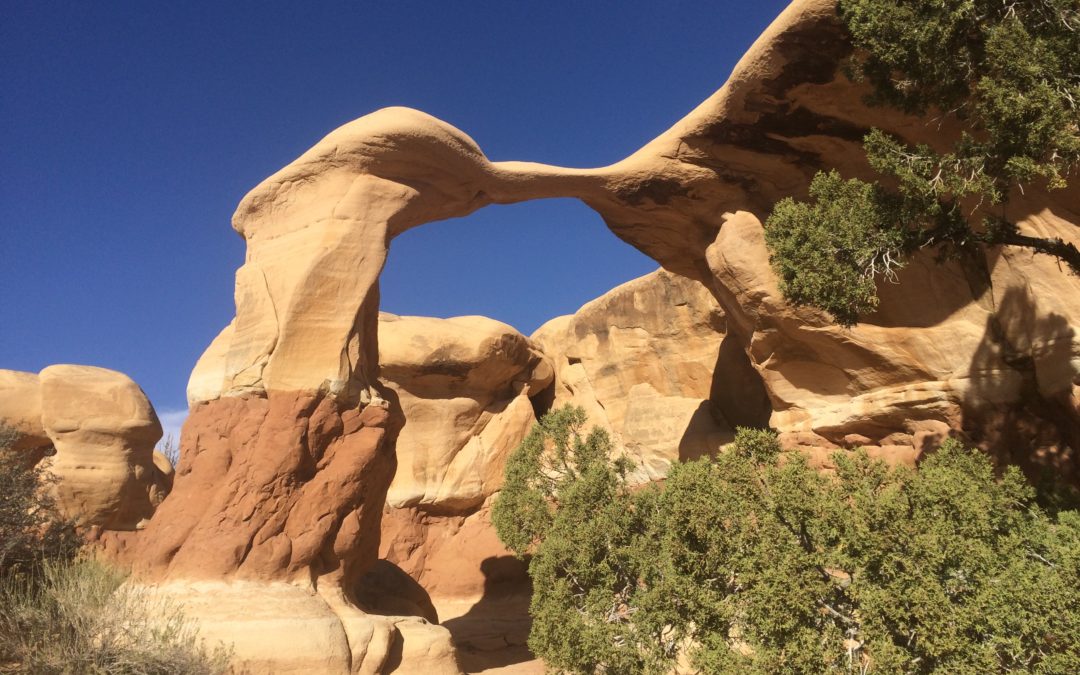
by The Goat | Aug 27, 2019 | Geology, Grand Staircase-Escalante, History, Utah Canyon Country, Vermillion Cliffs
How was the Grand Staircase formed?
Why is the Grand Staircase called the Grand Staircase? Because it sounds cool? Well, of course because it sounds cool, but the name actually represents a very unique and important geological phenomenon that has been built over hundreds of millions of years. Starting from the North Rim of the Grand Canyon to the hoodoo wonderland that is Bryce Canyon National Park, the Grand Staircase represents progressively younger and higher cliffs that quite literally form a staircase, as though a giant was looking for an easy way to step up to the Sierra Nevada Mountains. There are five stairs in this grandest of staircases, each a different color, a different piece of rock, and a different age from Permian to Cretaceous, a span of over 200 million years.
Step Zero: Kaibab Limestone, North Rim Grand Canyon National Park
Before you being to climb any staircase, you must first stand below it and contemplate your climb. This is step zero. The best part about this step is that there it also serves as a foyer, with stairs above and below. The stairs below? 2 billion years of Earth’s history and 5000 vertical feet down to the Colorado River and its Grand Canyon. The top step of this staircase is the North Rim of the Grand Canyon and the Kaibab Limestone, a Permian formation packed with marine fossils that serves as the hard, protective layer of the Kaibab Plateau and the soft sandstones and shales that make up the red and orange walls you will see when hiking in Grand Canyon
Step One: The Chocolate Cliffs: Moenave and Chinle Formations
The first official step in the Grand Staircase is the Chocolate Cliffs, located near the town of Fredonia, AZ and seen prominently on US hwy 89 near the Arizona/Utah Border. The Chocolate Cliffs can also be seen below Glen Canyon Dam. Aptly named, these velvet brown cliffs of the Moenave Formation, a variably sandy and silty sandstone/shale that represents a proximal marine fluvial (river) system of early Jurassic age, are part of the greater Glen Canyon Group that includes all the Jurassic-aged units of the Grand Staircase (Wingate, Moenave, Kayenta, Navajo). The Chocolate Cliffs are home to thousands of dinosaur fossil fragments, though no full specimens have been recovered.
Step Two: The Vermillion Cliffs: Kayenta Formation and Navajo Sandstone, Vermillion Cliffs National Monument
The Vermillion Cliffs, perhaps more famous geologically for their National Monument that contains such features as “The Wave“, White Pocket, and Buckskin Gulch, are the second step in the layercake of geologic time that forms the Grand Staircase. Laid down during the mid Jurassic, Vermillion is composed of two distinct rock units that are married to one another across the Colorado Plateau. The Kayenta Formation, which is sandwiched between the older Wingate and younger Navajo Sandstones, is a terrifically diverse and interesting unit that represents a wetter transition period with a howling and vast desert on each chronological side.
A veritable melange of lithology, Kayenta has just about everything from thin lenses of limestone and muddy shales to cross-bedded sandstones similar to its stratigraphic neighbors. It records almost seasonal changes with its mud cracks, as well as large scale climatic changes indicated by sand dunes, river beds, and even the occasional shallow lake bed. Kayenta and Navajo are almost always found together, and oftentimes form dramatic cliffs and canyons together as seen in the Vermillion Cliffs and Zion National Park.
Step Three: The White Cliffs: Navajo Sandstone, Zion National Park
The third step in the Grand Staircase are perhaps some of the most most famous and photographed cliffs in the world, creating Zion National Park in southwest Utah. Soaring red and white Navajo Sandstone, formed by a massive windblown desert in the middle Jurassic, have made Zion National Park one of the most sought-after destinations in the Utah, the American Southwest, and even the world as people travel from thousands of miles and from every corner of the globe to behold the epic grandeur showcased by these rocks.
Step 4: The Gray Cliffs/Straight Cliffs, Straight Cliffs Formation/Mancos Shale, Grand Staircase National Monument
Though often overlooked for its wildly famous famous neighbors, the fourth step Gray Cliffs are nothing if not spectacular. Though not as celebrated as the White and Pink Cliffs contained within the boundaries of Bryce and Zion Canyons and their National Parks, the Gray Cliffs contains some of the most wild, scenic, unspoiled, and lightly explored wilderness in North America. Think that sounds ridiculous? Consider this: the Kaiparowits Plateau, wherein the Gray Cliffs are most prominent, receives less visitors in one year than Zion does in one day, and that’s just the beginning. The Gray Cliffs and the canyons below them contain some of the most complete and celebrated archaeological finds in the United States. Want to see a T-Rex? Want to walk in Apatosuar footprints? The Gray Cliffs house all these wonders and more in their Cretaceous-era shales.
Step 5: The Pink Cliffs, Claron Formation, Bryce Canyon National Park
Our climb ends in some of the most famous scenery in the entire world, the pink and orange hoodoos of the Claron Formation and Bryce Canyon National Park. Remnants of shallow, salty inland lakes of the late Cretaceous, the Pink Cliffs have eroded into outrageously spectacular natural amphitheaters, mesas, and wild canyons. Cedar Breaks National Monument also displays the Pinks and receives far fewer visitors.
Visitors to the entire Grand Staircase area, from its namesake National Monument to the soaring cliffs of its three National Parks, will be treated to some of the most special, most spectacular, and most geologically important scenery in the entire world. There is no better way to explore the Kaiparowits Plateau, The Grand Canyon, or the rest of the Grand Staircase than with our geologist/guides, who will take care of your every need while giving you an in-depth glimpse into the geologic secrets hidden in this outstanding place.
Going Guided
Hiking and exploring Grand Staircase-Escalante, or any of the National Parks, is a special experience. Although it is possible to see these places yourself, hiring a guide is a great idea. For instance, guiding services provide logistical support, and plan everything for your best possible trip. They provide a great safety net on the trail, and are trained in backcountry medicine. Above all, they provide a depth of knowledge of the region that turns a walk into a true adventure.
Blue Marble Adventure GeoTourism provides all of the support you need, and pairs that with expert geologist/guides. Our backcountry meals use fresh ingredients, and are planned by a professional chef. Furthermore, we provide top-of-the-line gear and passion for the places we explore. In conclusion, you can visit National Parks, but going with a guide can create and even more memorable experience. Don’t be shy, and call us!
Read our blog!
For adventure hiking vacations in a geologic time machine, see our epic tours in Grand Canyon, Utah, and Arizona!
For geological musings read The Goat’s geology blog.
Follow us on Facebookand Instagram
Explore Further, Be Wild, See Through Time — Blue Marble Adventure GeoTourism


